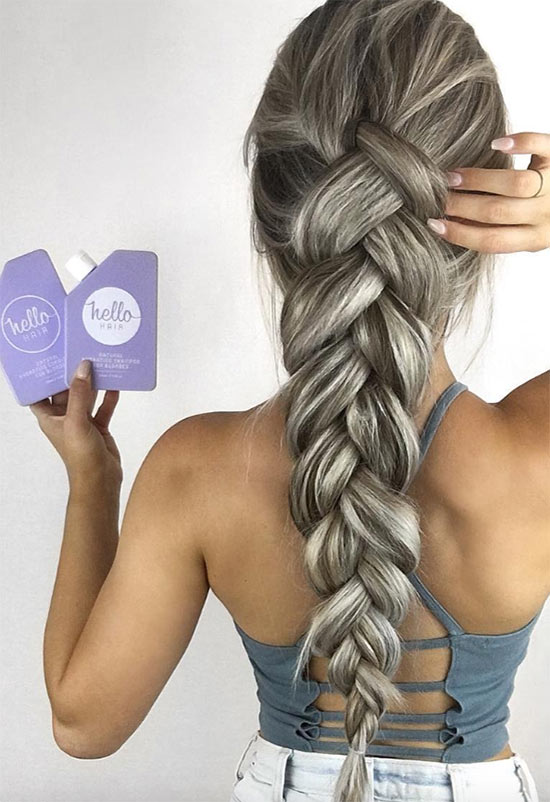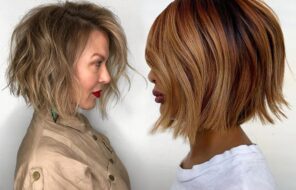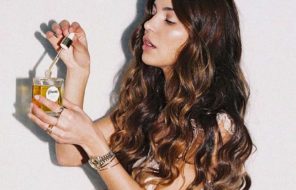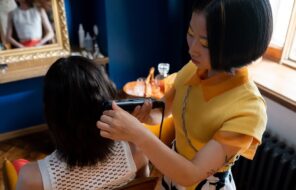Hair toners are the difference between a chic blonde and a brassy mess, but surprisingly enough, a lot of coloring enthusiasts don’t know a lot about them! Whether done in the salon or at home, hair toner can have a subtle yet extremely significant effect on the hair by helping to remove or neutralize excessively warm tones.
If you are wondering what hair toner is, exactly, I’ll be able to explain that in detail. I’ll help you understand if hair toner is right for you, and if so, I also explain exactly how to use hair toner, along with some clever tips. To cap things off, I’ll give you some DIY hair toning tips!
In this article:
- What Is Hair Toner?
- Who Is Hair Toner Recommended for?
- Pros & Cons of Using Hair Toners
- How to Use Hair Toner at Home
- DIY Hair Toner
What Is Hair Toner and How Does It Work?
Hair toner is a hair product that deposits the lightest hint of color unto the hair to neutralize brassy orange and yellow tones of bleached hair. Hair toners can come as sprays, dyes, drops, masks, and more, in all kinds of colors.
The idea with toners is that they allow small changes and subtle corrections to hair color, as opposed to stronger hair dyes that bring extreme changes. Hair toner can also increase the glossiness and shine of the hair, making dyed hair look healthier.
In another article, I focused on the best hair toners made for blonde and bleached hair. These hair toners are like weak hair dyes that deposit a cool tint to the hair, which helps to cancel out unwanted warm tones like yellow and brass.
You can see this clearly if you look at the color wheel, where purple sits opposite orange, and blue sits opposite of yellow. When one shade is applied over the other, the result is a neutral tone.
Who Is Hair Toner Recommended for?
Hair toner is recommended for almost anyone who gets regular coloring services that also lighten the hair, or for those who have naturally light hair. The most typical use of hair toner is for those who bleach their hair.
Bleaching the hair is not coloring it – it’s all about removing color from the hair. However, when pigment is removed from the hair, often it ends up looking yellowish or somewhat orange, instead of ash blonde or platinum. Hair toners change the undertone of the hair, and can help correct those warm tones to make the hair look more elegantly cool.
- Hair toners are recommended for those who bleach their hair, in order to give the hair a more sophisticated or particular tone. They can be done a few days after the bleaching treatment, or in salon right after the bleaching, depending on the formula of the toner.
- It is possible to use hair toners after the hair has been dyed, if the result is not perfect. Hair toners will lightly adjust the shade of the hair, especially if it came out looking too red or yellow.
- Sometimes blonde hair, whether dyed or natural, can look a little brassy, in which case hair toners are the perfect remedy for achieving a more neutral shade.
- For highlighted hair, hair toners can help blend together the different highlights and create a more seamless finish.
Pros & Cons of Using Hair Toners
So what are the benefits and possible cons of hair toners for you to know?
Pros:
- Hair toners correct hair dye mistakes.
- They give the perfect subtle touch of color.
- Hair toners ensure that your hair looks more elegant and sophisticated.
- Hair toners can be used at home in between coloring sessions, to maintain the hair.
- Some hair toners contain emollients and proteins to keep the hair healthy and shiny.
Cons:
- Hair toners only work on very light or already dyed hair.
- As with any hair dye, hair toners do take a bit of a toll on the hair.
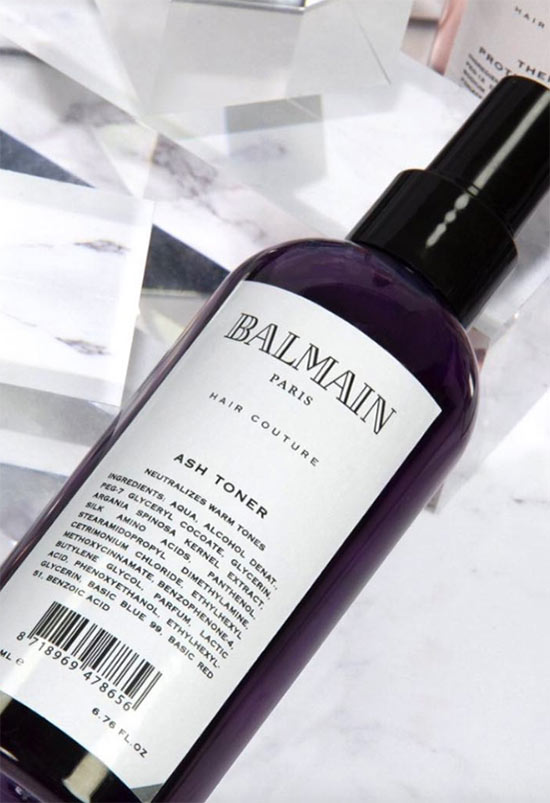
How to Use Hair Toner at Home
These instructions apply to any hair toner that must be rinsed off, whether it comes in the form of a stronger, hair dye-like formula with ammonia, or a hair mask toner that is gentle and nourishing to the hair.
I generally do not recommend toning hair immediately after bleaching it, because when you dye your hair at home it is very easy to damage the hair. Leave the immediate toning to the professionals and the salon, and if you’re doing everything at home, wait a few days after bleaching the hair before toning it.
You can also follow these instructions if you are simply maintaining the tone of the hair in between coloring sessions.
- Lighten Your Hair
Before you start, make sure you are happy with the lightness level of your hair. Hair toners do not lighten the hair – they only change its undertone. If your hair is not as light as you’d like it to be, you will likely be unsatisfied with the effect of the toner.
- Mix in the Developer
If your hair toner requires a developer, mix the two together following the instructions on the container.
- Protect Yourself
Make sure to protect yourself from getting toner on your skin or clothes! You can wear a shirt dedicated to hair dyeing, or a button-up shirt that you can remove without having to pull it over your head. Also line up a towel, for protecting your neck, and perhaps even cover the perimeter of your hairline with vaseline to prevent staining. Wear plastic gloves during this process!
- Read the Directions
Some hair toners are best applied to hair that is recently washed and towel dried, with just a hint of dampness. Others are best applied to hair that is totally dry. As always, read the directions on your product to find out.
- Apply It
You are ready to begin applying! For the most even coverage, use a hair dye applicator brush. Section off your hair, and figure out where you want to apply the hair toner. If you want to apply the toner all over your head, then simply start by sectioning off the top part of your hair with a hair clip or a hair tie.
Apply the hair toner with the applicator brush, starting closer to the roots and pulling it down towards the ends of the hair. Massage the toner in to make sure that it is covering all sides of the strand.
Apply the hair toner this way, going one-inch clump by one-inch clump. Once you’ve finished applying toner to the bottom part of the hair, you can let down the top part that you’ve clipped and continue doing the same thing.
If you have some hair toner mixture left over once you’ve covered your whole head, take it and massage it a bit into your roots and throughout your head. Make sure to be wearing plastic gloves when you do this! - Let It Work
Once your hair is fully covered, clip it all up into a bun so that it doesn’t interrupt you or stain anything around your house. You don’t need to wear a shower cap.
Now it’s time to chill! Read a book or do some chores while your hair is processing. Most hair toners need to sit in the hair for about 30 minutes, although mask hair toners can sit in the hair for two hours since they are very gentle. Follow the instructions on your hair toner container for the best results. - Wash It off
When you’re done, hop in the shower to rinse out the toner. Rinse out the hair toner with just cool water. Avoid shampooing it, as this will fade its effects.
Moisturize your hair with the help of deeply nourishing conditioner. You can even let it sit in your hair for a few minutes before rinsing it out. - Towel Dry
When you’re done, gently towel dry your hair. Avoid blow-drying it or using heat-styling tools, as these can damage the hair.
- Don’t Shampoo for a Few Days
Wait a few days before you shampoo your hair, and make sure to use a sulfate-free shampoo. Shampooing too often will dry out your hair and make the color/ tone fade more rapidly.
- Combine with Purple Shampoo
To increase the effects of your hair toner, you may choose to use a purple shampoo.
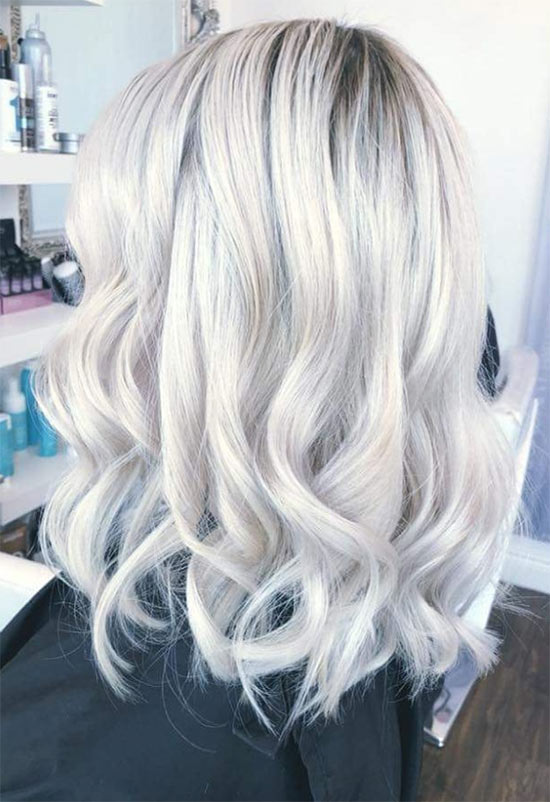
DIY Hair Toner to Try
Making your own hair toners is very easy, although getting it right is the hard part! Just make sure to mix a fresh batch each time, because it’s never a good idea to mix a few chemicals together and just let them sit there.
In this section, I recommend a 1:8 ration of hair dye to hair conditioner, but you may choose to adjust it depending on how brassy or yellow your hair is. You might find this ratio is too high or too low, so play around with it, but always err on the side of less hair dye lest your risk turning your hair purple or blue.
You will need:
- 1 part semi-permanent purple hair dye (to cancel out yellow tones) or blue hair dye (to cancel out orange tones)
- 8 parts white-colored hair conditioner
- A bowl
- A hair dye applicator brush
Pour the hair conditioner into a bowl, and then add to it the hair dye. Mix everything together until the mixture turns a very pale lilac or light blue shade.
Once it’s ready, apply it to your hair following the instructions I listed above. Let it sit for about 30 minutes, and then rinse out.
Photos via @okevaaa, Instagram

